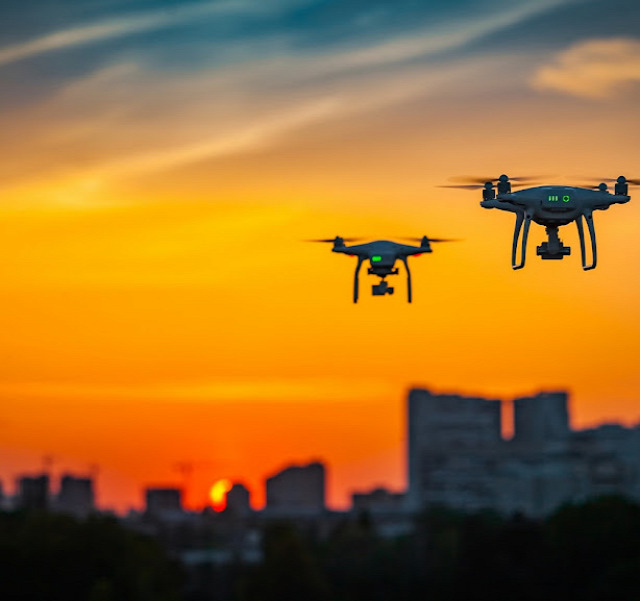
Unmanned Aerial Vehicles (UAVs) have become indispensable across a myriad of industries, from military and defense to agriculture, logistics, and surveillance. However, their effectiveness often hinges on seamless communication systems. Satellite communication plays a pivotal role in enabling UAVs to transmit data over vast distances and operate beyond the constraints of terrestrial networks.
The global UAV satellite communication (SATCOM) market is estimated to reach $10,725.6 million in 2033 from $9,365.0 million in 2022, at a growth rate of 1.34% during the forecast period 2023-2033. As the demand for UAVs continues to soar, the UAV satellite communication market is witnessing substantial growth, driven by technological advancements, increasing applications, and evolving regulatory landscapes.
UAV Satellite Communication Market by Application
- Marine Surveillance
- Disaster Management
- Surveying and Mapping
- Industrial Inspection and Monitoring
- Military ISR
- Agriculture and Forestry
- Civil Surveillance
- Cinematography
UAV Satellite Communication Market Dynamics:
The UAV satellite communication market is propelled by several factors, including:
-
Technological Advancements: Ongoing innovations in satellite communication technologies, such as high-throughput satellites (HTS) and miniaturization of components, have enhanced the capabilities of UAV communication systems. These advancements enable UAVs to transmit large volumes of data with minimal latency, crucial for real-time applications like surveillance and remote sensing.
-
Rising Demand Across Industries: Various sectors, including agriculture, oil & gas, and environmental monitoring, are increasingly adopting UAVs for tasks such as crop monitoring, pipeline inspection, and disaster management. The need for reliable communication links in remote and inaccessible areas has spurred the integration of satellite communication systems into UAV platforms.
-
Regulatory Developments: Regulatory frameworks governing UAV operations are evolving globally to address safety, privacy, and security concerns. Governments are mandating communication systems that ensure command and control (C2) capabilities for UAVs, further driving the demand for satellite-based solutions compliant with regulatory requirements.
-
Military Applications: The defense sector remains a significant contributor to the UAV satellite communication market. Military UAVs require robust and secure communication channels for intelligence, surveillance, reconnaissance (ISR), and combat missions. Satellite communication offers military operators the advantage of extended range and non-line-of-sight capabilities.
Request A Free Detaiiled Sample on UAV Satellite Communication Market!
UAV Satellite Communication Market: by Region
- North America - U.S. and Canada
- Europe - France, Germany, Russia, U.K., and Rest-of-Europe
- Asia-Pacific - China, Japan, India, South Korea, and Rest-of-Asia-Pacific
- Rest-of-the-World - Middle East and Africa and South America
Europe accounted for the highest share of 29.88% in the global UAV satellite communication (SATCOM) market by value in 2022, owing to a significant number of companies based in the region.
Challenges and Opportunities:
Despite the promising growth prospects, the UAV satellite communication market faces several challenges, including:
-
Cost Constraints: Satellite communication systems, particularly those offering high bandwidth and reliability, can be expensive to procure and maintain, especially for small and medium-sized enterprises (SMEs) and emerging economies.
-
Spectrum Congestion: With an increasing number of UAVs and other satellite-dependent applications, spectrum congestion poses a significant challenge, necessitating efficient spectrum management and interference mitigation strategies.
-
Security Concerns: Securing UAV communication links against cyber threats, jamming, and spoofing attacks is paramount, particularly in defense and critical infrastructure applications.
Get Detailed Insights in SpaceTech Market Research Reports
Conclusion:
The UAV satellite communication market is poised for substantial growth, fueled by technological advancements, increasing UAV adoption across industries, and evolving regulatory landscapes. As the demand for reliable and resilient communication links for UAVs continues to escalate, market players must remain agile, embracing innovation and collaboration to capitalize on emerging opportunities and address evolving challenges in this dynamic landscape.

